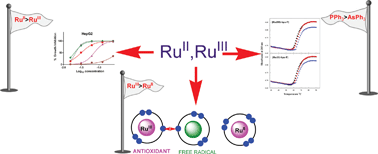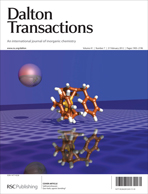With the aim to develop more efficient, less toxic, target specific metal drugs and evaluate their anticancer properties in terms of oxidation state and co-ligand sphere, a sequence of RuII, RuIII complexes bearing 4-hydroxy-pyridine-2,6-dicarboxylic acid and PPh3/AsPh3 were synthesized and structurally characterized. Biological studies such as DNA binding, antioxidant assays and cytotoxic activity were carried out and their anticancer activities were evaluated. Interactions of the complexes with calf thymus DNA revealed that the triphenylphosphine complexes could bind more strongly than the triphenylarsine complexes. The free radical scavenging ability, assessed by a series of in vitro antioxidant assays involving DPPH radical, hydroxyl radical, nitric oxide radical, superoxide anion radical, hydrogen peroxide and metal chelating assay, showed that the RuIII complexes possess excellent radical scavenging properties compared to those of RuII. Cytotoxicity studies using three cancer lines viz HeLa, HepG2, HEp-2 and a normal cell line NIH 3T3 showed that RuII complexes exhibited substantial cytotoxic specificity towards cancer cells. Furthermore, the RuII complexes were found to be superior to RuIII complexes in inhibiting the growth of cancer cells.

You have access to this article
 Please wait while we load your content...
Something went wrong. Try again?
Please wait while we load your content...
Something went wrong. Try again?


 Please wait while we load your content...
Please wait while we load your content...